BMW code reader OBD devices have been enjoying a rise in popularity over the recent years due to rising interest by vehicle owners and to learn more about their vehicles’ on-board systems, errors, and read real-time data. We’re here to take an in-depth look at what a BMW OBD2 scanner is, what it can do, and why you need it. We delve into the history and development and show you what can be done with the right device.
So what is a BMW OBD2 scanner? OBD stands for on-board diagnostics, and the current standard is OBD2. BMW began installing the 16-pin OBD2 socket in its vehicles from 1996. Prior to this, the OBD1 standard was used. OBD2 has been mandatory in vehicles with gasoline engines since 2001, and diesel-engined vehicles since 2004. The socket can be found beneath the steering wheel of your BMW. With the appropriate BMW OBD2 scanner, you can read and analyze stored error codes that often provide information about the condition of your BMW, as well as the opportunity to customize certain aspects of it.
GAIN MORE CONTROL OF YOUR CAR WITH THE CARLY FEATURES
Check the exact pricing of Carly for your car brand!

Fast International Shipping with DHL

14 days adaptor return policy

Excellent customer support

Lifetime warranty in the hardware
SEEN IN
Everything else you need to know about the BMW OBD2 scanner can be found in this post.
The Emergence of OBD
Let’s take a trip down memory lane. The trip goes back to Germany, in 1965. At that time, Volkswagen had started to produce vehicles with a central socket through which a diagnostic connector could be plugged in. The purpose of this was to automate diagnostics in workshops. At this early stage, exhaust gas diagnoses were not part of the test program.
Diagnostic systems for monitoring the exhaust gases were introduced in the USA in 1988, led by the State of California’s “California Air Resources Board”. The idea was very simple: we didn’t just want to measure the exhaust gas values at the time of sale, we wanted to be able to track them during the car’s lifetime. This approach is sensible as exhaust gas values can change due to a myriad of factors, such as when parts wear out and lose efficiency.
The measurement was mandated to be carried out by the car’s on-board electronic systems. This so-called OBD1 standard is the birth of OBD as we know it today. The self-monitoring systems had to send any errors that pushed emission values above the set limit to a lamp in the dashboard -—the engine control lamp, or MIL for short (also known as Check Engine Light). Furthermore, all data had to be stored in a memory that could be read out using on-board tools (blink code).
Today, the MIL is part of the OBD for all vehicles. New regulations also require monitoring of the surveillance conducted by the system. The reason for this requirement is the fear that diagnoses would not be carried out regularly over the service life and influence the values. So now diagnoses must be recorded and must also be made at a certain interval. The results should then be read out via a serial interface with standardized protocols and via the CAN bus, which we will learn about later.
If you want to read more about the development of OBD2, you can check out this article.
Sp OBD was in effect born out of an interest to control emissions. As time and technology progressed, the function range of OBD has been vastly expanded. In addition to the environmentally relevant task areas originally envisaged, safety-relevant aspects were added to the vehicle diagnosis. Areas such as seat belt systems and airbags, faults such as short circuits or line interruptions, problems that could cause possible engine damage, maintenance instructions such as maintaining correct oil level, and more. The OBD has become much more than a mere emissions monitoring system today.
The new regulation that the MIL must be part of the OBD came into effect for gasoline engines from 2001 and for diesel engines from 2003/04. With this change, manufacturers also switched to a standardized OBD socket, and OBD2 was born. Since then, OBD has gained awareness and popularity among car owners. Did you know that vehicles that were supposed to be transported to the USA were OBD2 compliant even before 2001? And due to the new regulations, none of the new VW Beetles made in Mexico could be registered in Germany as they did not meet the standards of that country!
Why Do You Need an OBD Scanner?
Simply put, you need it so that you can access the systems on your BMW, reading and analyzing errors to understand faults, and for advanced users, customize or “code” your BMW. Since the standardized socket is present in all cars since 2001, it is the portal that offers access to the world of your car’s integrated systems and control units. You need a suitable plug-in adapter to access this portal, as well as the right device with correct software. We will go into more detail about this connector, and let’s start with basics. The most basic function is the continuous monitoring of exhaust gas relevant values, recording these and reporting any significant increases from the norm. The storage of data and the interface for reading these values (OBD2) is included in the basic function set.
Why is OBD so important, and why should we care about exhaust gas values? Well, it’s necessary to ensure that your car passes muster with the authorities and the emissions standards set by your country. Furthermore, OBD has evolved from being an emissions monitoring system to being a large-scale monitoring device for the entire car. Due to constant improvement, the on-board diagnosis now also ensures hazard prevention and should also prevent engine damage in practice.
Let’s take a practical example. If a spark plug cable comes loose or breaks off, the OBD detects this, switches off the corresponding cylinder’s fuel injector to prevent further damage, and the check engine light comes on. The driver will also feel a drop in performance as a result of the non-functional cylinder. So, the driver can quickly attend to the issue instead of continuing to drive with the fault, which could cause engine damage.
This simple example illustrates the importance of a BMW OBD2 scanner. Those who regularly read the control units themselves via such adapters and scanners have saved a fair bit of money because they were able to check and understand the fault, saving themselves a trip to the workshop and paying for a corresponding scan. Self-scanning allows one to determine if the problem is minor or serious, and act accordingly. If you want to know more about reading devices, we recommend our other articles on this topic.
What is a BMW Code Reader ?
BMW owners know the importance of maintaining their vehicles to the highest standard, and a BMW scanner is an essential tool in this process. This diagnostic tool is not just a simple code reader; it’s a comprehensive system car scan tool that offers unparalleled insight into your BMW’s health. With a BMW-specific scanner, you can read and clear codes, perform battery registration for new batteries, and even access repair procedures and frame data for various BMW models.
One of the standout features of this scan tool is its ability to reset functions like the oil reset and provide detailed diagnostic data on your car’s engine, transmission, and other vital systems. Whether you own a classic BMW or one of the latest models, this tool’s compatibility and functionality are unmatched. It’s a handheld unit designed to save time and money, offering the ability to perform tasks that would otherwise require a trip to a mechanic or a repair shop.
Battery issues, particularly with new batteries, can be easily addressed with this tool. It’s not just about installing new batteries; it’s about ensuring they are correctly registered with your car’s system. This functionality is crucial for BMWs and is also applicable to other related brands like Rolls Royce and Mini. The scanner’s ability to diagnose and reset a wide range of codes and troubleshoot various issues is what makes it a must-have for BMW owners.
In terms of coverage, this diagnostic tool goes beyond just reading trouble codes. It offers comprehensive data on your BMW’s systems, from the ABS to the SAS. Moreover, its integrated software ensures up-to-date information and compatibility with a range of models and brands. This level of diagnostic capability was once only available in expensive, professional-grade scanners but is now accessible in more affordable, user-friendly formats.
The versatility of the BMW scanner extends to its compatibility with various devices, including iPhones and Android smartphones. Its user-friendly interface allows for easy navigation, whether you’re looking to check engine codes, troubleshoot an airbag issue, or perform routine checks. The tool is also invaluable for routine maintenance, such as oil resets and battery registration, helping to extend the lifespan of your BMW.
How does a BMW OBD2 Scanner Work?
As mentioned, the new OBD2 interface is standardized and therefore the same socket is present in every car. The BMW OBD2 scanner plugs into this socket and serves as a bridge between the car’s systems and the respective device used for accessing, reading, and performing advanced functions. We’ll go into the advanced functions later, let’s look at the structure of the OBD interface.
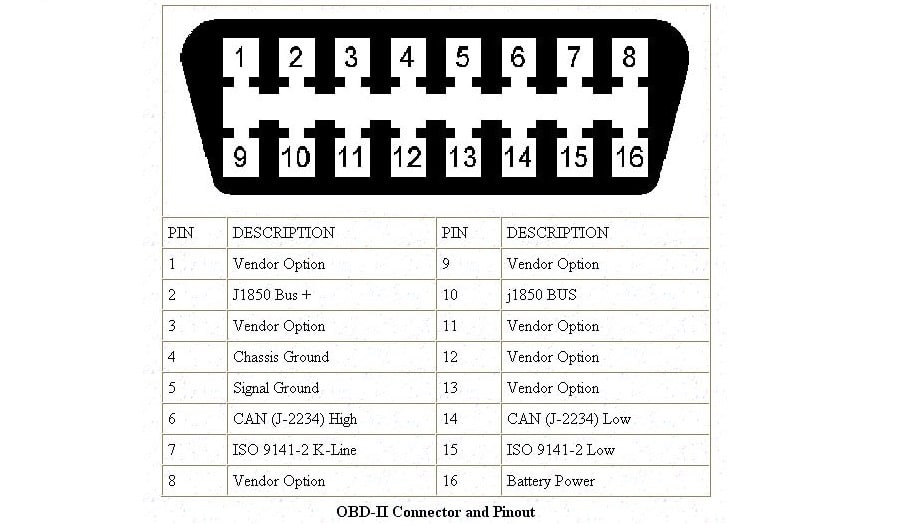
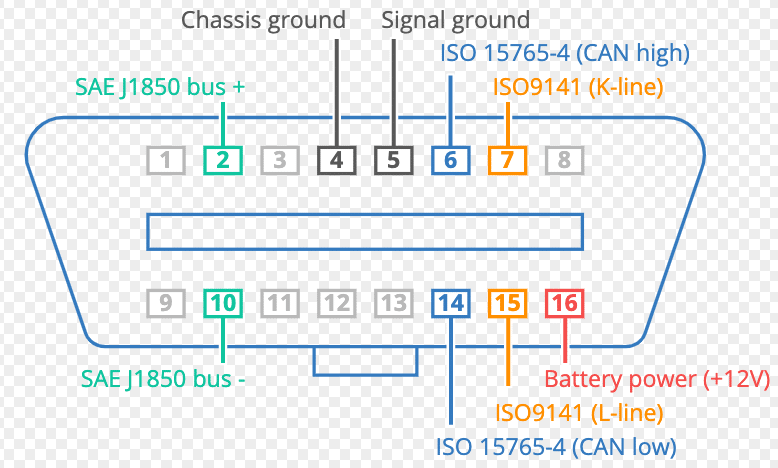
The socket has a total of 16 poles, all of which are assigned to different tasks or buses. The manufacturers can customize seven of these poles to their requirements. Therefore, these often differ from manufacturer to manufacturer. For BMW vehicles, the BMW OBD2 scanner connector poles are as follows:
Pin1: + 12V
Pin4: ground
Pin5: signal ground
Pin7: ISO 9141-2 K output
Pin8: data line
Pin9: engine speed
Pin16: battery +
Poles 2 and 10 are J1850 buses, poles 6 and 14 CAN high or CAN low bus and poles 7 and 15 are K and L lines. Now let’s take a quick look at what these buses are.
J1850 Bus
The Society of Automotive Engineers (SAE) standardized the J1850 bus which was mainly used in North America. This bus was later replaced by the CAN bus. The J1850 bus is an open architecture of the bus topology without a master station. It’s very inexpensive hence its popularity. The J1850 supports two different methods as standard: pulse width modulation (PWM), and variable pulse width (VPW).
K and L lines
The K-line is a bidirectional wire, which means nothing more than that data can be transmitted in both directions. It is responsible for data transmission between different components and can also be operated unidirectionally in conjunction with the L line, i.e. only in one direction.
The two lines are primarily required for diagnosis and readout and are used specifically for external communication. This is useful, for example, if you want to look through your BMW with a readout device, since the lines are involved in the on-board diagnosis of control units. As stated, the transmission can only take place in one direction at a time, but as soon as this transmission is interrupted, it can also take place again in the other direction. The property of a bus remains, however, as communication with several control units is still possible via the same cable. As soon as a control unit is addressed, communication is carried out with it until another control unit is addressed.
CAN Bus
The CAN bus is one of the most important parts of our cars today. The purpose of this bus is to reduce the number of cables in cars and save cost and weight. The CAN bus was developed by Bosch in 1983 and hit the market three years later. At that time, the total length of cabling in a car could be up to 2km, which was drastically reduced by combining them with the CAN bus.
The CAN is ISO standardized and defines two layers, the physical layer and the data security layer. The first layer, i.e. the physical one, is divided into the high-speed CAN and the low-speed CAN. These two tracks are not compatible with each other and for this reason also have two separate poles in the OBD socket of your BMW.
Here you can find more general information about the OBD2 adapter.
OBD for Your BMW
Now, let’s see what you can accomplish through a BMW OBD2 scanner. We have already touched upon the constant monitoring activity which ensures proper functionality of important components. In addition to this, there are other things that can be done too.
Readout Device for BMW
Control units are minicomputers that are connected to the most important components such as the engine or components that provide comfort such as the climate control system. They are responsible for ensuring everything runs smoothly. They are all connected via the CAN bus and can be read out using a BMW OBD2 scanner.
If you want to read the error codes from your BMW, there are many different devices available for this purpose.
The diagnosis task as simple as plugging the OBD scanner into the vehicle’s socket, connecting your device, and following the steps on the reader and its software. Reading the relevant control unit will show the error codes.

Code Your BMW
Let us delve into an advanced topic, and that is coding. Coding is the option to redesign certain aspects of your BMW according to your preference.
When coding, existing codes are overwritten with new codes. These codes are the most important thing in your car, as they “determine” many of the processes. As an example: your turn signal lights up three times after you press the tip of the turn signal stalk in the requisite direction, aka one-touch operation. It’s coded that way. But you can change that for some cars by “unlocking” a different code or writing over it. Then it only lights up once, or as many times as you desire. Other areas that can be coded include lighting, power windows, and more. Here are some examples by category.
Coding lights — Coming Home Function
The “Coming Home” function is pretty nifty in that it keeps your car’s lights illuminated for a set period of time after locking, designed to help you navigate your way home in the dark, as well as looking cool. Depending on the model, the coding can take various forms. The duration is usually easily changed, between 30 and 90 seconds for example, and some models allow you to select the lights involved with this, for example, dipped headlamps, indicators, or all lights at full brightness. There’s a lot of coding that can be done with lights via some BMW OBD2 scanners.
Coding Turn Signals
Let’s move on to turn signals. In addition to one-touch blinking, a lot more can be coded. For example, the hazard warning lights can be changed according to personal preferences, or the “charging” blinker can be adjusted.
Coding Closing Functions
You also have a few options for coding when closing. We’ll go into a single one, which is “Confirmation on Full Close”. In short: when all the doors are closed, the car gives you a signal. This is not to be confused with the signal when shutting off the car, which can also be adjusted via coding. You can choose between acoustic or visual confirmation or both!
Coding Windows
Coding your BMW’s windows is also an option and a pretty neat one that parents will appreciate — as children may open the rear windows without them noticing. You can set it where all windows close upon locking the car, as well as open when unlocking the car.
Our website provides information on the other possibilities for coding your BMW, as well as articles on coding in general.
How Do I Read My BMW Codes?
There are three different ways to read your BMW and we will briefly touch upon each one, with the possible advantages and disadvantages too. These methods include reading out using a diagnostic device, using software, and using an app. All three methods require access to the OBD system, and therefore, a generic or specific BMW OBD2 scanner. However, there are differences in the way in which they connect. Some smartphone apps allow a connection via Bluetooth to the OBD scanner, while more advanced software interfaces require a special OBD cable and adapter. Regardless of which way you choose, a diagnosis should be the end result.
Readout via Standalone Device
For reading with a standalone device, neither a smartphone nor a laptop is required. All you need is the device! That sounds pretty easy, but there are many devices on the market with many functions. Not every diagnostic device can do everything — there can be a lot of variation. Therefore, you should identify whether you only want to read and analyze errors or delve into advanced functions such as coding as well. Remember, devices that are function-rich are also likely to be more expensive.
Advantages:
- A single, dedicated device for this purpose.
- You can get a wide range of functions with some devices.
- They are handy, and easy to use once you learn the basic functions.
Disadvantage:
- Devices with a broader function set will certainly cost much more.
- You won’t always have it with you as you’re unlikely to carry it around in your vehicle.
- Updating may depend on whether it is built to be updated, and if so, whether the device manufacturer regularly provides updates.
Readout via Software
Reading out via software is a rare variant among private vehicle owners and drivers. The software runs on a laptop usually unless you have a PC in the garage! Software solutions require a corresponding OBD adapter to communicate between the vehicle and host computer but are packed with features and can perform in-depth diagnoses. The larger screen of a laptop also helps with readability. A software program may be confusing at first glance, but with the help of the user manual, you should get the hang of it.
Advantages:
- Offer a wide range of options to work with.
- Large screen aids readability and displays more information at a time.
Disadvantage:
- Can be expensive to purchase.
- You also need a compatible adapter and cable.
- Not suitable for beginners as there may be a steep learning curve.
Diagnosis via a Smartphone App
The last option is particularly popular due to its ease of use. Diagnosis by app is quick and versatile, but many apps may not offer in-depth analyses. They are ideal for a quick check, and some allow coding as well. This solution is the quickest and easiest to understand compared with the first two. Since we at Carly have chosen this way of diagnosis, and are compatible with BMW vehicles, we would like to introduce you to the Carly app in more detail.
The Carly App
At Carly, we have developed a simple, clear, and concise app to help you read out your BMW. The app only works with our Carly Universal Scanner, which you can buy online for € 59.90, plus shipping. Then you can decide if you want to unlock all the apps features with a subscription for € 21 to €80 per year. Is the price a shocker? Then take some time to look at ordinary scanning devices or even a dedicated BMW OBD2 scanner. You will see that we offer a fantastic function set for a fraction of the price. Let’s go further into the features you get.
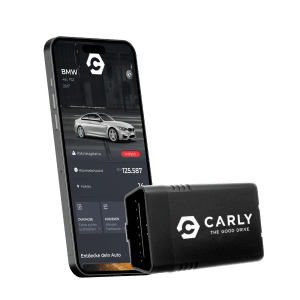
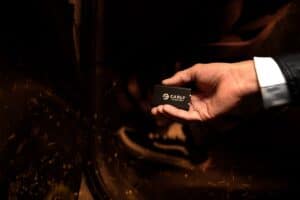
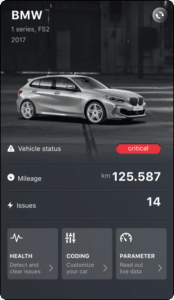
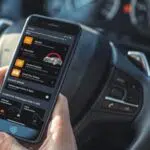
Readout Error Codes for BMW with Carly
Let’s start with the basic function that every device offers, and that is reading out error codes. When reading out, the control units of your BMW are scanned and checked for error codes. Error codes are a record of small malfunctions that have occurred in your vehicle’s systems and are recorded in the memory. You may see these errors as a warning light in your cockpit. However, you don’t have to rush to the nearest workshop. Just connect Carly and do a scan. Any errors that are found during the selection are then clearly displayed in the app. In addition to the function of reading them, you can also delete them directly at Carly if they are no longer of great importance. However, we only recommend that for advanced users who understand the operations of the car’s systems. An internet search before deleting any errors is recommended. Many car enthusiasts have already immersed themselves in the world of reading and are happy to share their experiences with newcomers from the scene. If you are still iffy, consult a professional and they will be glad to help.
Code Your BMW with Carly
We gave you a preview of the codings that should be possible for your BMW, although codable functions may vary from model to model. All the above codings can be performed through Carly, provided your car can accommodate it. With Carly, many other functions can be coded in addition to the ones already mentioned. For example, it is also possible to code things in the interior or to change the wiping intervals of the windshield wipers.
If you are interested in coding, you should definitely read our other texts on coding. You will discover important details as well as all possible codings for your BMW, which you can find on our website as well.
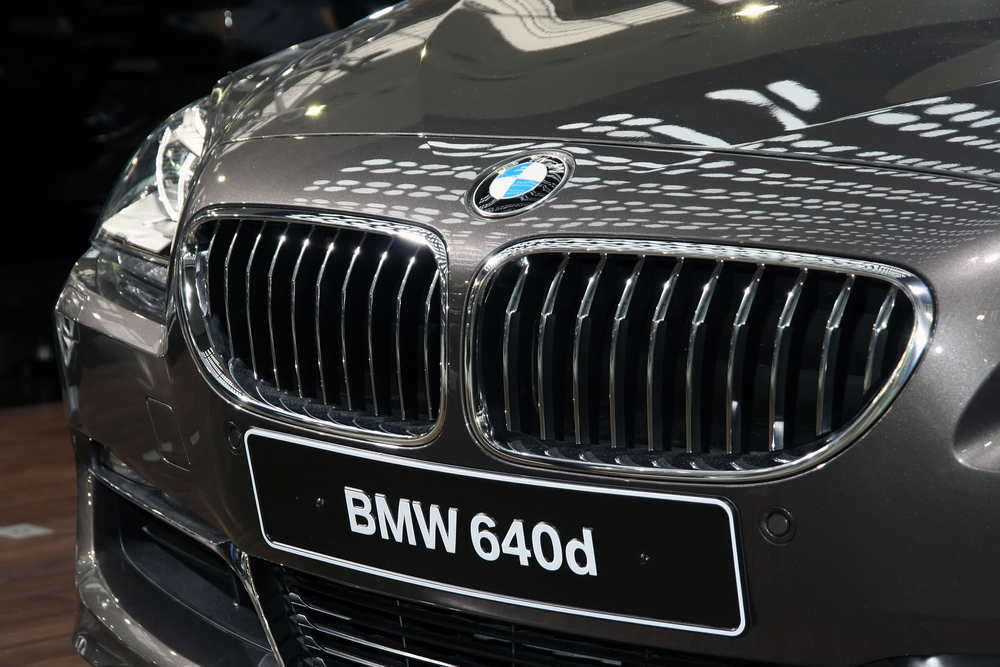
Still a little skeptical? Download the basic Carly app for now, which is free and you can still access many functions. You can use this as a way of evaluating Carly before deciding to go for the full version.
Carly Used Car Check
Odometer manipulation is a common problem across the world, as it is possible to rewrite the mileage of a used car with the help of an OBD adapter and the right software. In addition to the display in your cockpit, the mileage of the control units is often manipulated, so that it is difficult to prove manipulation. But Carly can help catch this manipulation.
The used car check makes reading out the control units particularly easy for you. In the function titled “Carly Used Car Check”, you do not have to read out each control unit individually, as the app reads out all the mileage for you and performs the direct comparison. This activity only takes a few minutes and can be performed when inspecting a used car prior to purchase. If a discrepancy is found, the app will sound an alarm and display the error. The onus is on the seller to explain the discrepancy. In some cases, a part may have been replaced with one of a lower mileage, however, this should be recorded in the vehicle registration document.
In summary, with Carly, you have the possibility to connect your mobile phone to your BMW, check for error codes, and do coding. Carly offers a one-stop, integrated solution!
You can find a whole article about the Carly app here . We go into detail about all functions and give you tips on working with Carly.

